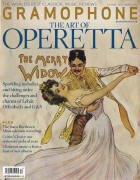Texte paru dans: / Appeared in: |
|
 |
Outil de traduction (Très approximatif) |
|
Reviewer: Fabrice Fitch Compared with the famous triumvirate of his contemporaries, Schütz, Schein and Scheidt (or even Michael Praetorius), Andreas Hammerschmidt (c1611-1675) is an unheralded figure. Those with long memories may recall Joshua Rifkin’s recording of a lovely setting of the chorale melody Gelobet seist du, Jesu Christ for Nonesuch (which I listen to every year at Christmas), and since then there has been the occasional anthology (by Weser-Renaissance Bremen, for example). So whether he’s quite as obscure as is suggested in the notes to Vox Luminis’s new offering is a moot point, but here unquestionably he gets in at the front door. Highly praised in his lifetime as an organist, Hammerschmidt published his compositions at regular intervals throughout his career. This programme draws on a wide range of music, from pieces for solo singers or vocal ensemble with just continuo to polychoral ones with independent instrumental parts. The guiding thread is the Passion story, moving from darkness to light. Towards the end, more festive pieces reveal a different side to the composer (and the ensemble). The subdued atmosphere of the first few pieces has clear echoes of the ensemble’s Award-winning account of Schütz’s Musikalische Exequien (A/11). It is tempered by the same quality of inner luminosity that characterises the earlier recording – a combination of acoustic, vocal plenitude and clarity, and the continuo group that underpins it. Placing the new recording in such company is, I think, a fair reflection of its quality; in fact I’d say it is finer still, because the soloists’ contribution is more telling and even more varied, and the choir’s studiously polished sound stretches here to more boldly delineated effects: that repeated cry of ‘Ach’ at the start of the title-track has the requisite urgency and pathos, whether carried by the ensemble or, later, the soloists. Given how important is the distinction between ensemble and soloists, that balance of tensions seems crucial. The title-track directly recalls the Musikalische Exequien: Hammerschmidt’s setting of the words ‘Jesus stirbt’ (‘Jesus is dying’) echoes the recurring ‘Selig sind die Toten’ near the start of the third section of the Schütz. That correspondence is pursued in later pieces, which share textual links with Schütz’s masterpiece, and there are many others. Hammerschmidt excels at textual repeats that function rhetorically, a feature to which this ensemble is unusually responsive. It’s not a matter of insistency but of a concentrated delivery that bears repetition. Changes of mood call forth subtle transitions: everything is immaculately judged and the emotion seems to come from the music itself. Such an ego-less approach serves the music admirably. Aside from their Passiontide destination, the initial handful of pieces is a tightly integrated group, with similar strategies recouping and dialoguing with each other. In O barmherziger Vater, Zsuzsi Tóth’s subtle quavering tone is most affecting, and in Warum betrübst du dich, the repeated exhortation ‘Es bleibt alles in der Welt’ (‘All things in the world remain’), disseminated throughout the choir, is a fine example of the rhetorical strategy I mentioned earlier. A more popular, songlike tone emerges with Bis hin an des Creutzes stamm, in which the instrumental ensemble takes on a more independent role. The setting of the famous chorale Christ lag in Todesbanden introduces three trombones, and a few pieces later a celebratory note breaks out in the splendid Triumph, Triumph, Victoria, reminiscent of Praetorius at his most jubilant. Here be trumpets, and an ever more expansive continuo section, with a bassoon thrown in for good measure (the latter one of the miniature highlights of the album, to my ear). It’s worth emphasising again the distinction and quality of the instruments here: even with strings and continuo as sole accompanists, their combined effect with the choir is very impressive (as at the conclusion of the setting of the Lord’s Prayer).
The celebratory Triumph, Triumph is nicely set up by the full choir in
reflective mode (Ich bin gewiss, das weder Tod) just before it;
thereafter the mood steadies somewhat with a series of pieces reflecting on the
Resurrection and its aftermath. The dialogue principle governing several of the
pieces on this recital reaches a peak of complexity in Wer wälzet uns der
Stein, in which the women at the tomb, the angels, Christ himself and the
observing chorus are all protagonists. But in the next piece, Ist nicht
Ephraim dein theurer Sohn, that complexity is matched with a peak of
expressivity, especially (and appropriately) at the words ‘Darum bricht mir mein
Herz, gegen ihm’ (‘My heart breaks on his account’): the five vocalists turn in
a superb piece of ensemble-singing. Altogether,
this is the standout among the albums I have reviewed in a year where such
experiences have seemed more necessary than ever. |
|




